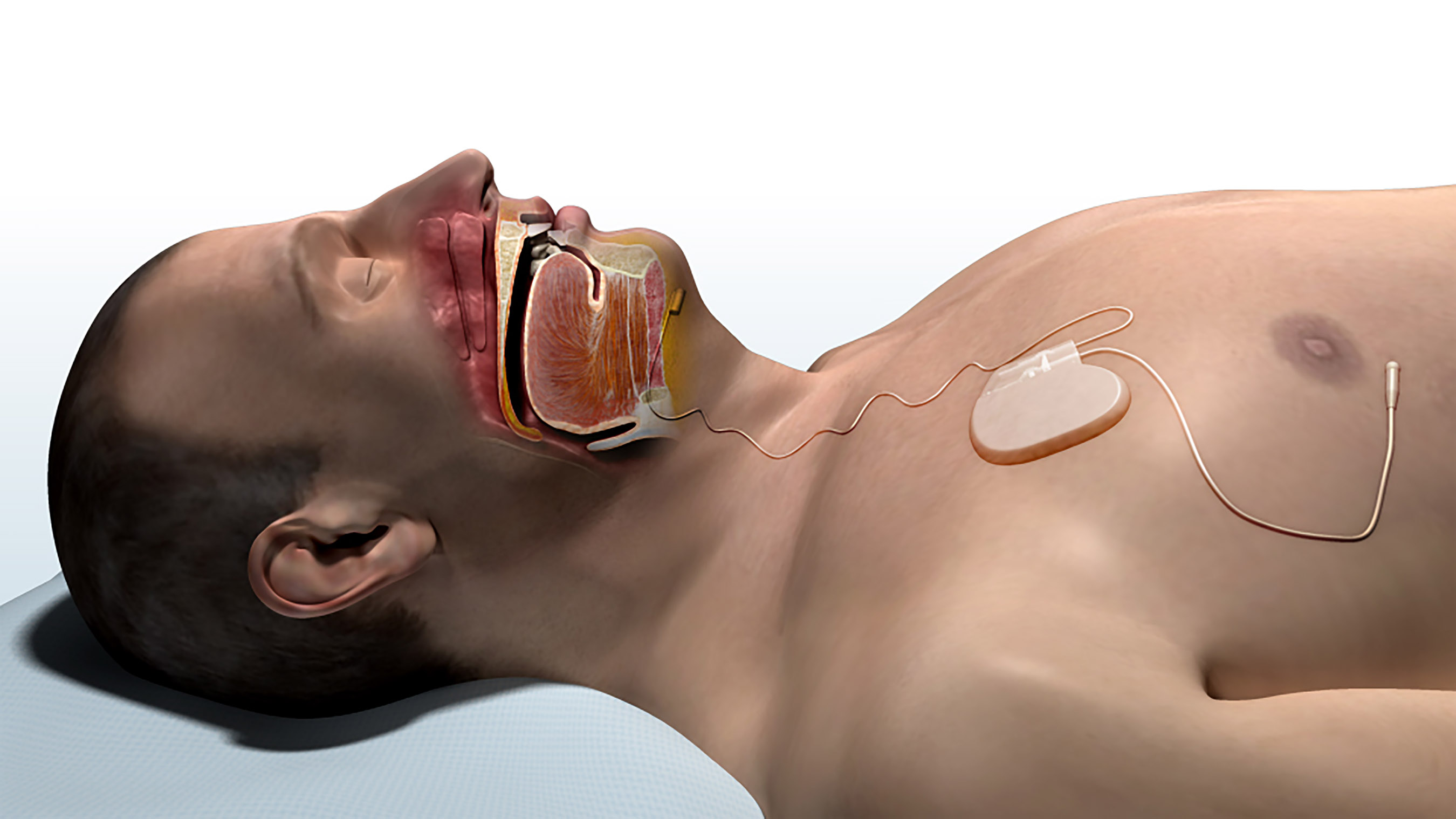In this guest post, Dr. Eric Kezirian answers your questions about upper airway stimulation therapy with the Inspire device.
Positive airway pressure therapy (whether CPAP, BPAP, APAP, or another form) is the first-line treatment for obstructive sleep apnea (see the image of an obstructed airway to the right).
However, some patients cannot tolerate or sleep comfortably while wearing it. If you are having trouble with positive airway pressure therapy or if it is not helping you, you may want to consider alternative treatment options, including surgery.
Inspire Upper Airway Stimulation is an exciting new treatment that was approved by the United States Food and Drug Administration in 2014 for patients with obstructive sleep apnea who do not tolerate or do not benefit from positive airway pressure therapy. I was the first surgeon in the Western United States to offer Inspire Upper Airway Stimulation and have many years of experience with this approach to treating sleep apnea.
The Upper Airway Stimulation system works somewhat like a pacemaker for the tongue. There is a main unit (called a pulse generator) that sends a signal to the nerve controlling tongue movement (hypoglossal nerve) through a stimulation lead as well as a sensing lead that allows the system to send that signal only when the patient is breathing in and not through the entire night.
Upper Airway Stimulation is different from other treatments for sleep apnea in many ways, including the fact that it combines surgery and non-surgical treatment. Here are answers to some of the questions I receive about it.




